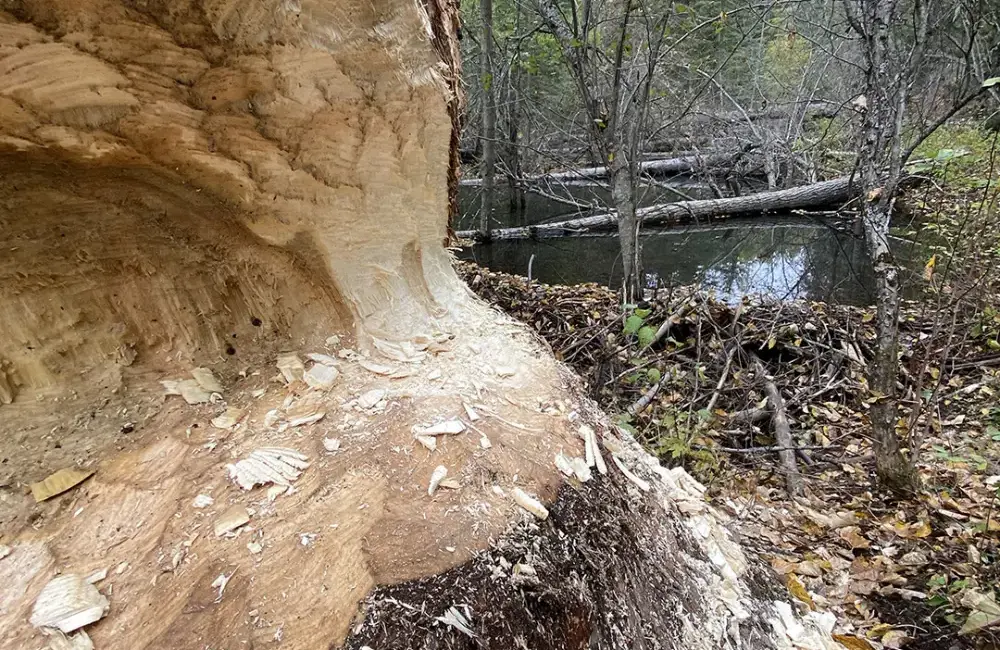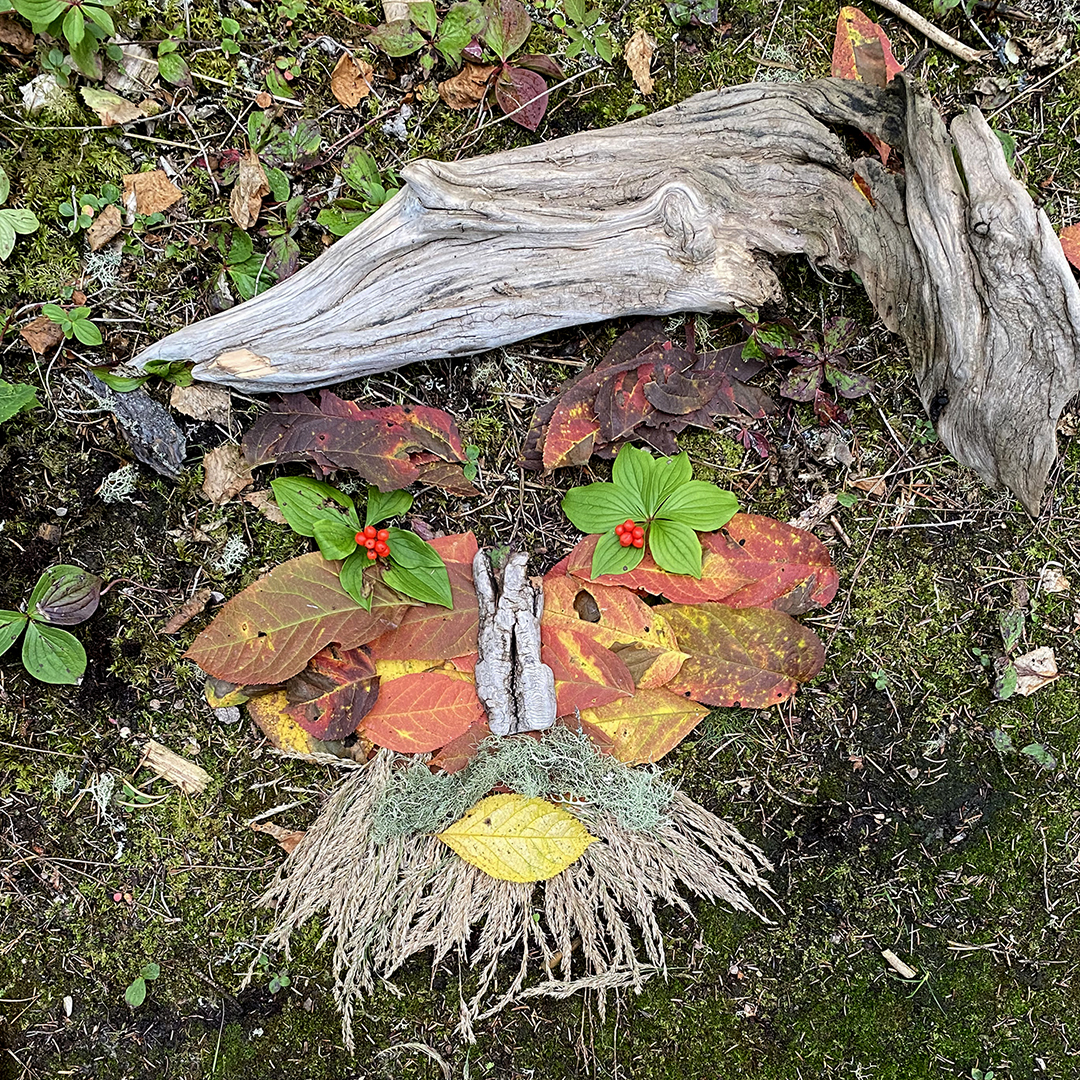
87 – Introspection & Soul Searching in Nature with Jess Winnicki
- Safe Harbour Therapy Centre
Subscribe: Apple Podcasts | Google Podcasts
Exploring art, nature, and what we can learn from the lives of our friends, the beaver
What can happen when we are open to the power of art and nature, seeing art in nature, creating art in nature, and are immersed in nature? I have been pondering about the life of beavers and what we can learn from these industrious creatures. I have some personal stories to share about recent experiences while being in nature as well as reflections on being in the natural world and in the forest.
The following information was found on the web-site ‘Whose Land’:
As we engage in processes of reconciliation it is critical that land acknowledgements don’t become a token gesture. They are not meant to be static, scripted statements that every person must recite in exactly the same way. They are expressions of relationship, acknowledging not just the territory someone is on, but that person’s connection to that land based on knowledge that has been shared with them. – Lindsay DuPré- Metis Nation
I acknowledge that we are on Treaty 1 Territory, the traditional gathering place of the Anishinaabe, Cree, Oji-Cree, Dakota and Dene people and the traditional homeland of the Métis people. Every time we acknowledge this truth, we have an invitation and an opportunity to reflect on what we do and what we can do to make Manitoba a better place for everyone who lives here. I would also like to acknowledge that our drinking water in Winnipeg is sourced from Shoal Lake 40 First Nation.
I would also like to acknowledge the land where I have had recent experiences in nature that I will be discussing in this podcast. I would like to acknowledge while in the area of Nelson British Columbia I was on the traditional territory of the Sinixt, the Syilx, and the Ktunaxa peoples, this area is home to many diverse indigenous persons including the Metis. When I was in the Fernie British Columbia area I wish to acknowledge that the land I was on is within the Ktunaxa ?amaki?is, the homeland of the Ktunaxa people. I would like to acknowledge while I was in the are near Thompson Manitoba I was on Treaty 5 territory, the homeland of the Cree.

Nature as a Container
Nature can provide us a space of holding for processing and art creation, it influences and acts as a container for our processing. Nature provides for us materials, creation/exhibition space, and context in which to create. Respect for nature and its natural process is a key element. Our inner landscape can be mirrored by the outer environment we place ourselves in, we can find a circular connection: the individual connecting to nature, the individual creating with natural materials, moving back to the individual and their process. Spending time in nature and creating in nature can be a support for our mental, emotional, physical, and spiritual wellbeing.
Now try and picture this, we (my partner and our very good friend) have been hiking now for thirteen kilometres, through the forest, dense and covered by a mossy floor that was so soft you could curl up and go to sleep on it. Climbing over downed trees; seeing the power of the wind first hand. Carefully moving with each step, making sure to avoid any mushrooms that were growing on the path. After this part of our journey we arrived at the place we would set up our camp for the night, an area set right beside a set of rapids, a clue of what was in store for us the next day when we would reach Kwasitchewan falls. It was here by the waters edge that we set up our space for the night. This area provided the container for us to create in art in, I started collecting items and soon all three of us were creating this piece together. We collected found natural materials from all around our campsite, from the waters edge and deep into the forest. We collected berries, sticks, rocks, leaves, and grasses. It was a spontaneous and collaborative process, there was something truly connecting about us all creating together in this magical place. The photo of our creation is the only physical piece we have to hold, but that moment remains in memory, and the art created remained there. I like to imagine it being blown back into the forest, maybe stepped on by a moose, or munched on by a squirrel. The piece itself shifted and morphed from a landscape to a face, to its final form, I titled it ‘the hermit’ – representing soul-searching, introspecting, and inner guidance.
In the Forest
Excerpt from the book Finding The Mother Tree: Discovering the Wisdom of the Forest by Suzanne Simard:
“After a lifetime as a forest detective, my perception of the woods has been turned upside down. With each new revelation, I am more deeply embedded in the forest, The scientific evidence is impossible to ignore: the forest is wired for wisdom, sentience, and healing.” (Simard, 2021, p.6).
I feel Suzanne Simard explains so well what I have trouble putting into words and understanding. Why I feel so grounded when I am in the forest, why I feel this deep connection to the natural world around me. Connecting with trees, plants, and the wildlife all around, the living and breathing forest. Whenever I am out in nature I make a point of touching a tree, of taking a moment to pause and take a breath, even as I wrote this I took a deep breath in and I can picture myself back in many places, my hand on resting on a tree that has lived through many seasons and holds so much wisdom. There is a healing quality to nature, and being able to access it from memory when we are not there, we hold those feelings, that memory, that felt sense within us.
So What About the Beavers…
While in northern Manitoba as well as in the Kootenys of British Columbia I gained a new awe and respect for our animal friends the beaver. But before I share what I saw I wanted to share a summary from a podcast that I love. The podcast is The Wild, with Chris Morgan KUOW NPR out of Seattle (podcast found on Spotify). My partner and I first listened to this podcast in 2019 and I was hooked, especially with the episode, leave it to beavers, seriously. City planners in Seattle created some ephemeral wetlands that would support some wildlife the idea was that they would provide wet habitat in the summer and dry up in the winter. As soon as permanent water was established the beavers from around the area moved in, and built dams, which is what beavers do. Beavers cannot stand the sound of running water, its an innate thing, for the beavers that sound spells failure of their engineering efforts, there have been experiments where scientists will take recording of running water and put it out in nature and beavers will come and build a dam around it. They are very motivated by the sound of running water. The primary motivation of the beavers is to be safe and have sufficient food (sound familiar) they build the dams and increase their pond areas to achieve both of these goals. I really connected with this idea of beavers building up their pond area, increasing the size of the area that they can gather resources from. During the last nearly 20 months that we have all journeyed through many of our ponds decreased in size due to circumstances out of our control.
Now that we are back out in the world, back out in nature, what are ways that we can continue to increase our pond size, increase the area that we can gather resources from? Going out and connecting with the natural world is one of the ways we can metaphorically increase our pond size. We don’t have the sound of running water as a driving force like the beavers do, but perhaps instead a drive within us to feel connected to self, others, and our environments, something that calls out to us, like how running water calls out to beavers.
When I was out in nature I was fortunate enough to hear a beaver slapping its tail on the water. To see so many trees being worked on, for food and for the beaver dam and lodge, to see the wood chips left behind, it reminded me of the wood shavings left behind by wood planers. I saw the slides the beavers create to quickly move from the land to the water. The memory that stands out most for me was the huge, and I mean huge, cotton wood tree we saw in the Fernie area. I will include a picture of this tree in the post for this podcast. The tree was enormous and I was so impressed that the beaver (I believe) did not give this a second thought. The confidence to complete this task, I imagine, is unwavering.
So with all of this information about beavers, art, nature, trees, being immersed in the woods… What I have come to is this – explore – explore your inner and outer landscapes, explore nature to grow more deeply in tune to yourself. See yourself in the trees and the animals, create art in nature, find metaphors to make meaning, take time, pause, breathe deep and feel the forest breathe back. That is my wish for myself and for all of us, to be upheld and perhaps even restored by the forest.
Jess Winnicki, Social Work/Art Therapy.
References:
Leave it to beavers, seriously. (2019, April 23). KUOW – KUOW Public Radio. https://www.kuow.org/stories/the-wild-episode-4
Simard, S. (2021). Finding the mother tree: Discovering the wisdom of the forest. Penguin.
Whose Land. (n.d.). Whose Land. Retrieved November 13, 2020, from https://www.whose.land/en
